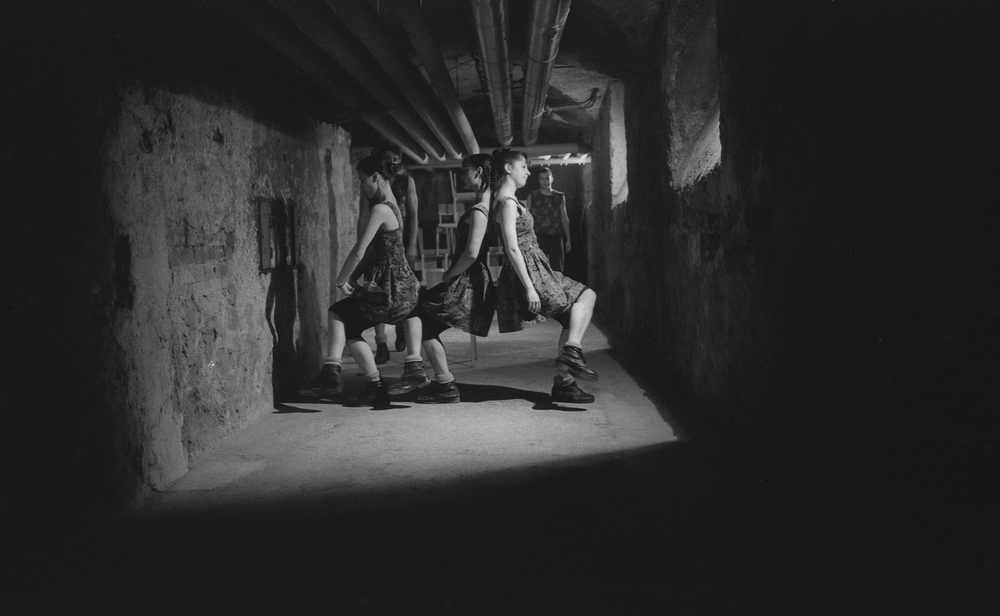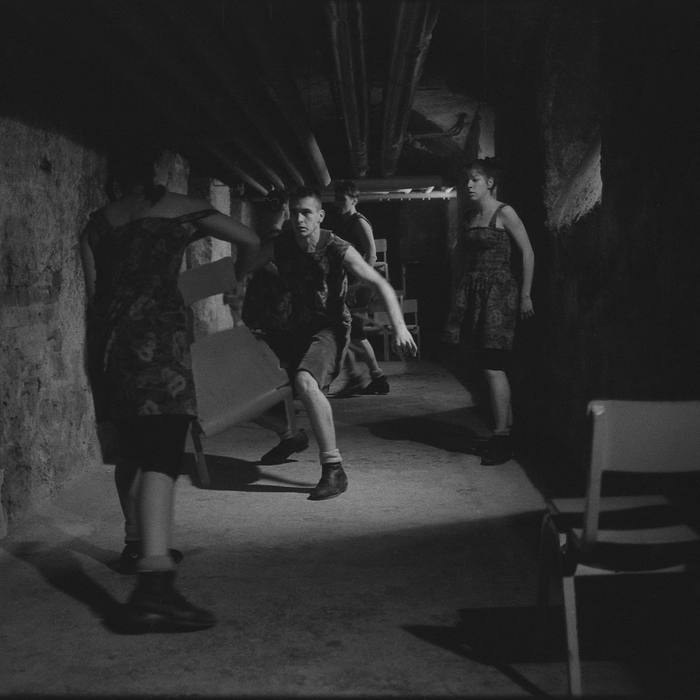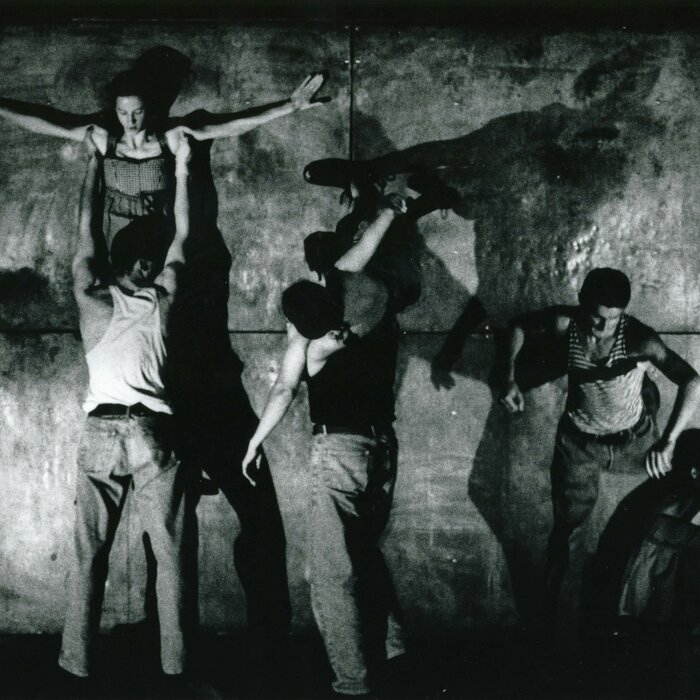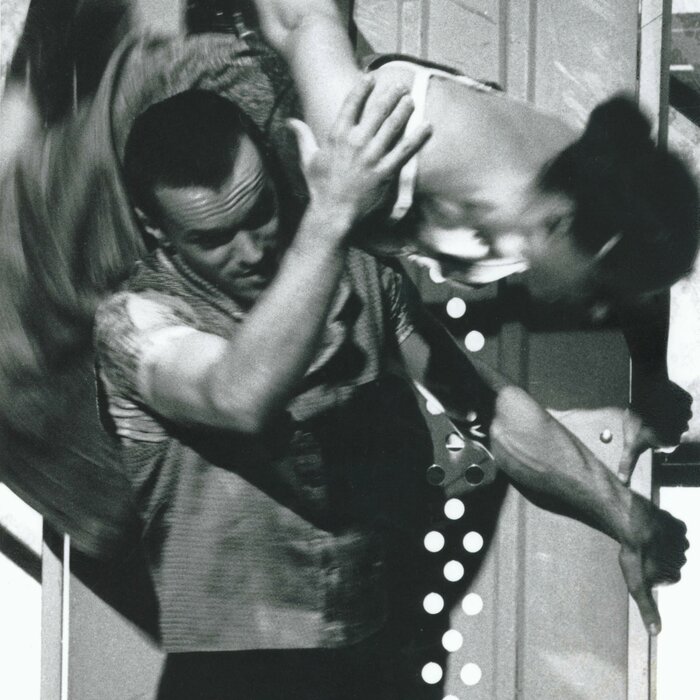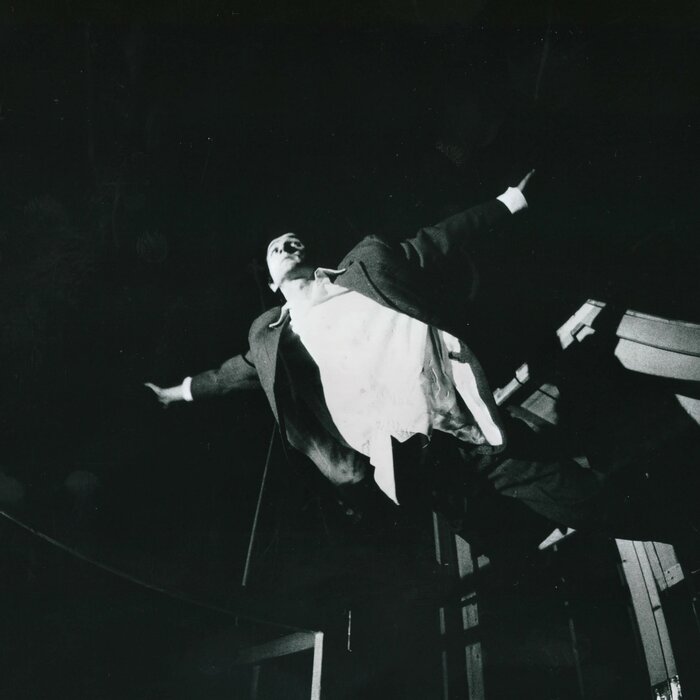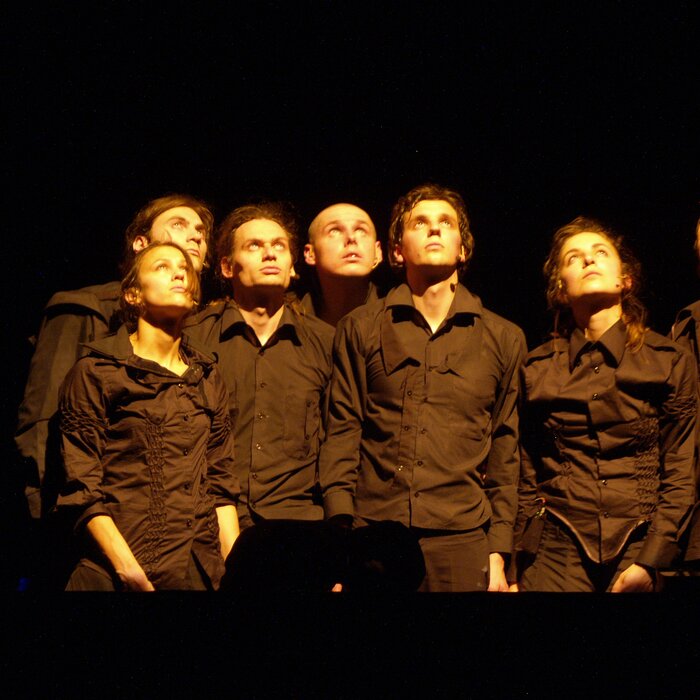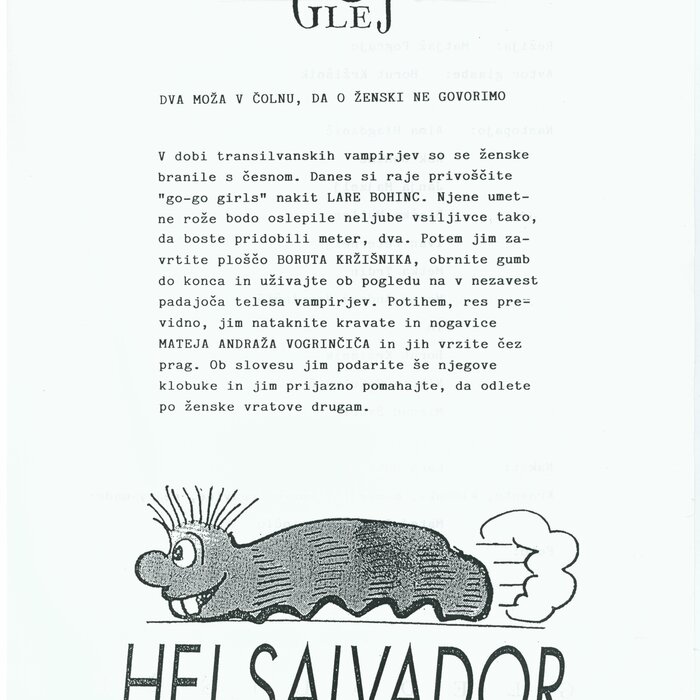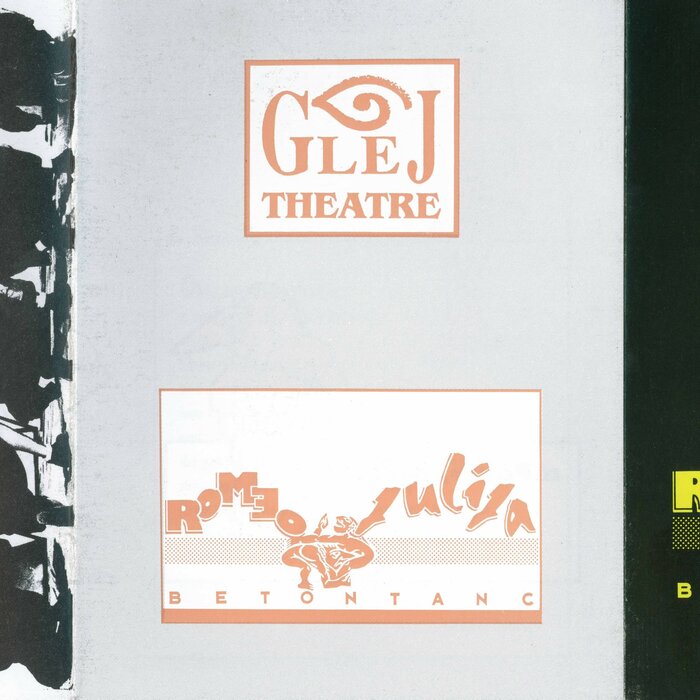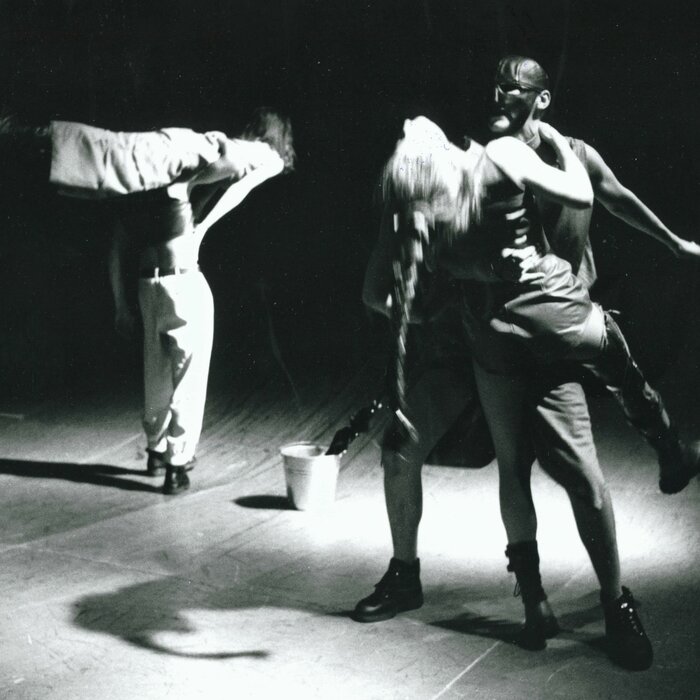»In the late 1980s and 1990s, physical theatre was a genre of contemporary choreography that a younger generation developed after the growing popularity of Pina Bausch’s Tanztheater, which had opened up enormous artistic possibilities for hybrid stage forms. Brutalist and anti-academic forms of dance occupied international stages in an outburst of creativity and different collectives started to emerge. In 1990, theatre director Matjaž Pograjc founded Betontanc and debuted with Poets Without Pockets (Pesniki brez žepov) in the basement of the Poljane Grammar School in Ljubljana in May of that year. The unexpected DIY approach to theatre and dance surprised the Slovene theatre landscape and turned into the latest Ljubljana stage hype. In the following years Betontanc would become the theatre and dance brand of the newly founded state of the Republic of Slovenia and experience huge international success (Every Word a Gold Coin’s Worth (Za vsako besedo cekin, 1992), Wet Hanky Thieves (Tatovi mokrih robčkov, 1993), Know Your Enemy! (1995), On Three Sides of Heaven (Na treh straneh neba, 1997), etc.) in the post-Cold War theatre explosion. Their international touring to different continents still hasn’t been matched by any similar Slovene performing arts phenomenon. During the 1990s they would stage situations and stories of the contemporary urban tribes, communicating instinctively and engaging in risky games. Like most physical theatre collectives at the time, they embraced elements of competition, risk, and danger, which had been introduced into choreographic work in an unprecedented manner, different from the analytical formal procedures of the dance of the 1960s. The notions of human drives, instincts, competition, brutality, and danger mirrored societal change and the market logic in the production of human relations. The levels of their conceptualization are yet to be studied, historicized, and declared in the phenomenon of the high number of physical theatre collectives (for example, Montažstroj in Croatia) entering different stage programming throughout the world in the 1990s.«
From Nika Arhar, Jasmina Založnik (ed.), Bodies ofm Dance, Aspects of Dance as Cultural, Political, and Art Work in Yugoslavia and After (Belgrade, 2024)
